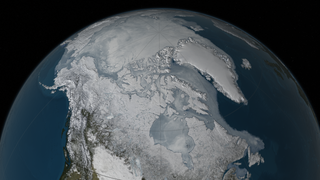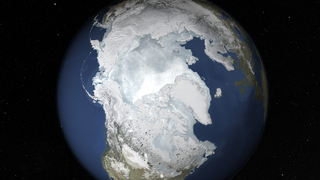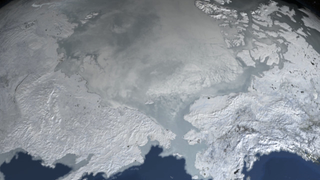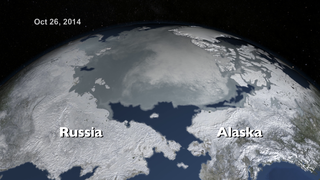Earth
ID: 4281
The maximum Arctic sea ice extent appears to have occurred on February 25, 2015, reaching an extent of 14.52 million square kilometers (5.61 million square miles). If the February 25 value holds, it would be one of the earliest maximums on record, 15 days earlier than normal, and the lowest extent in the satellite record starting in 1979. It is 129,500 square kilometers (50,000 square miles) below the previous lowest maximum recorded in 2011. Overall, there is a declining trend in the maximum extent of about 2.5 % per decade. This is much smaller than the summer trends, but also reflects the long-term warming trend in the Arctic.
While a low maximum gives the extent a head start heading into summer, it turns out that there is very little relation between the maximum and summer minimum and a record low maximum does not portend a record low minimum. This is because the ice near the edge at the time of the maximum is thin, seasonal ice that will melt out early in the summer. The weather conditions in the Arctic during the summer melt season is the most crucial in determining whether a record low is possible in any given year.
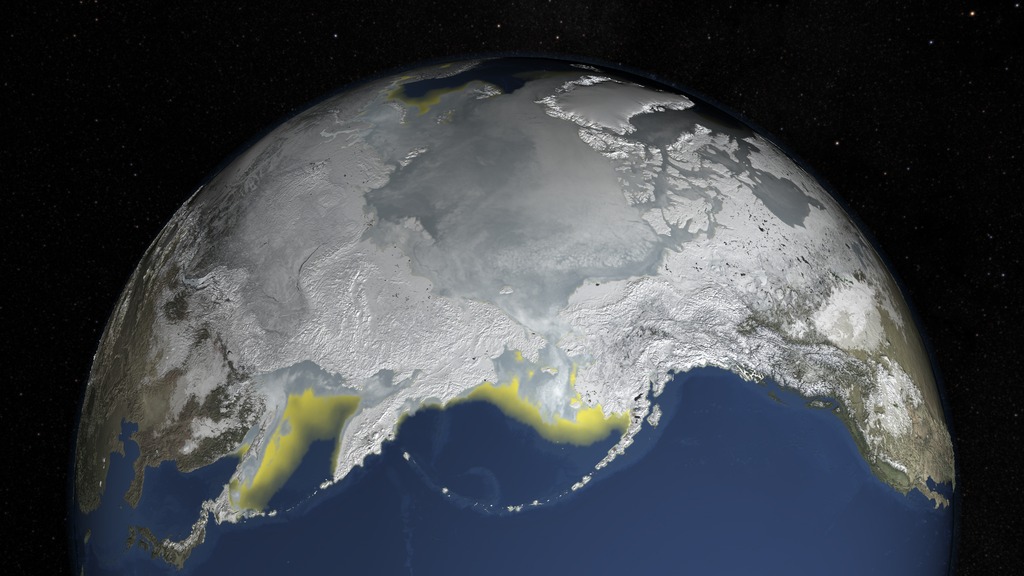
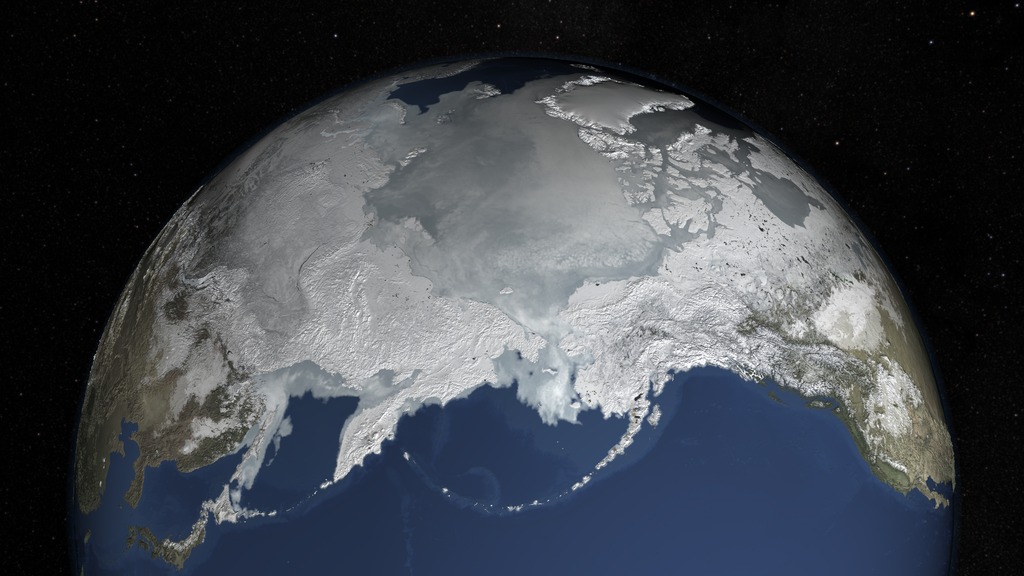
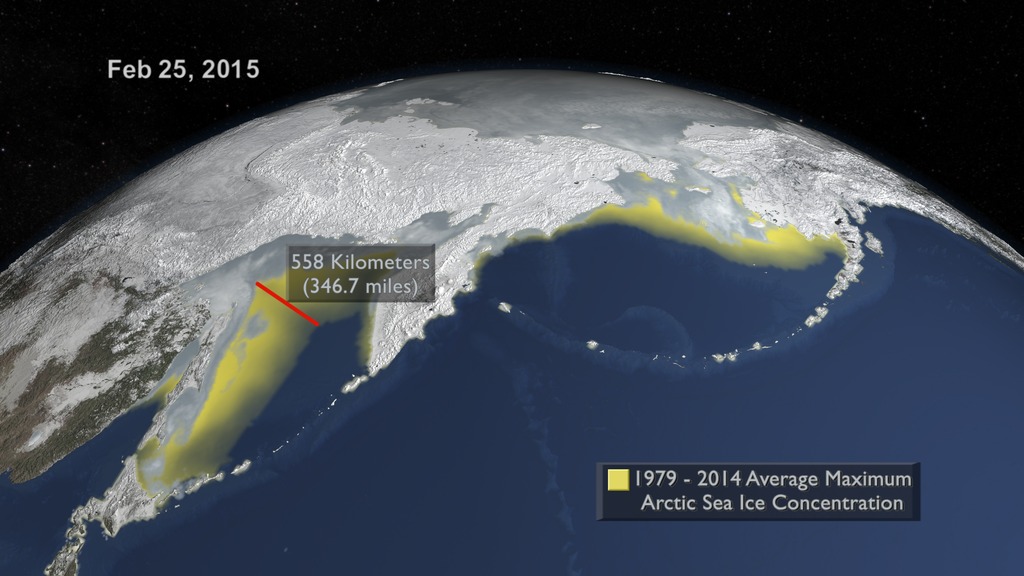

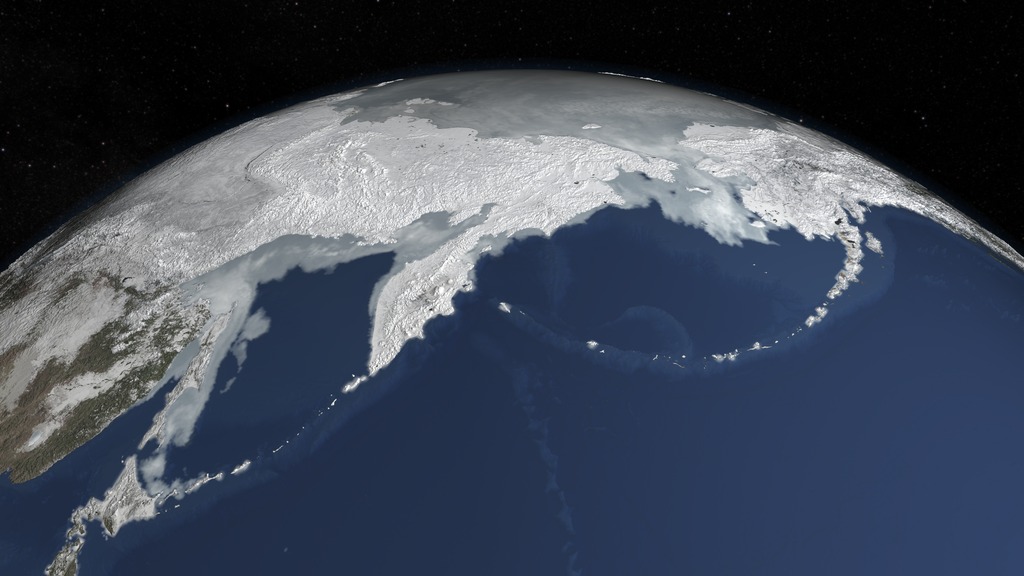
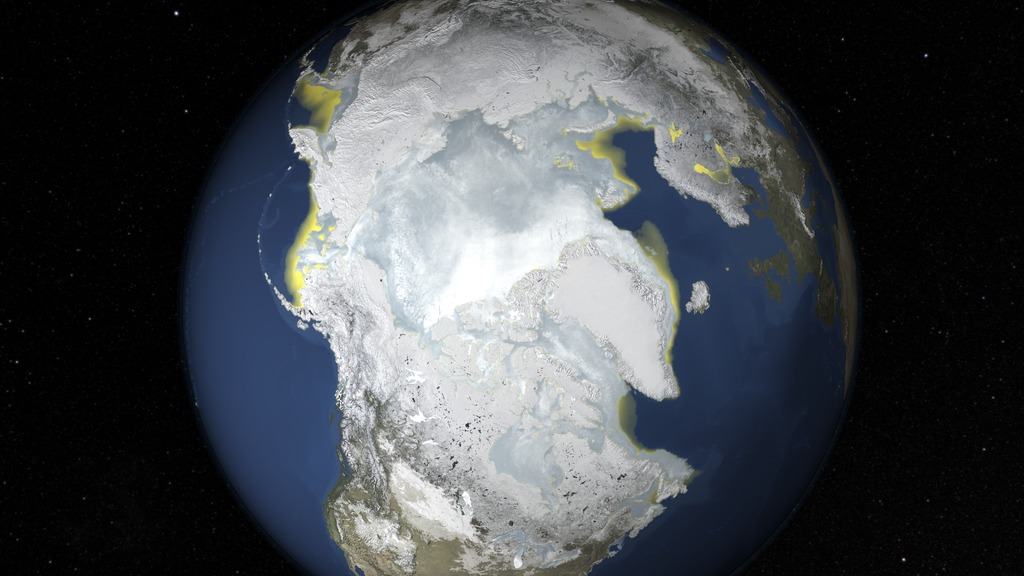
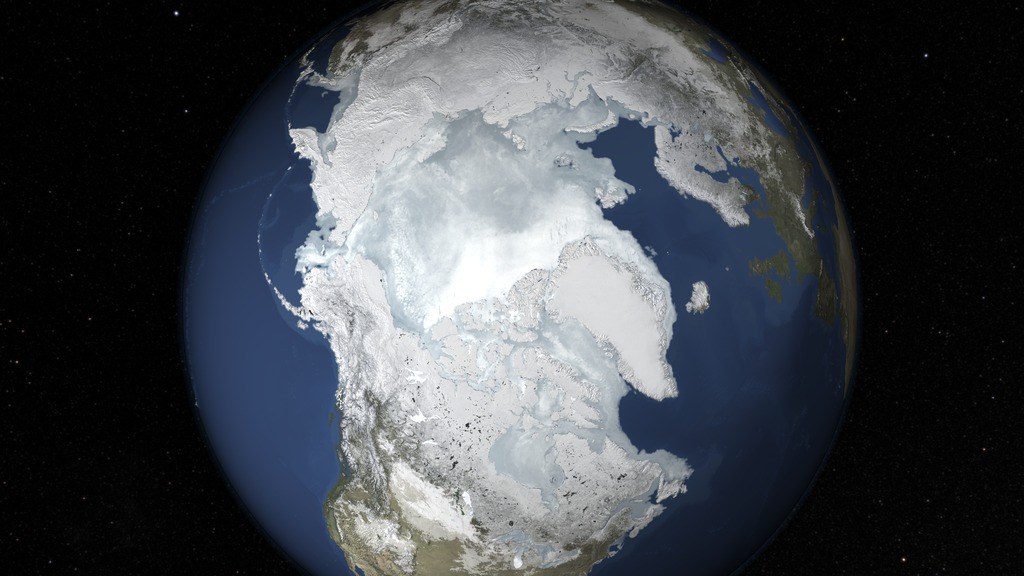
Arctic Sea Ice Maximum - 2015
There is a newer version of this story located here: https://svs.gsfc.nasa.gov/4440
While a low maximum gives the extent a head start heading into summer, it turns out that there is very little relation between the maximum and summer minimum and a record low maximum does not portend a record low minimum. This is because the ice near the edge at the time of the maximum is thin, seasonal ice that will melt out early in the summer. The weather conditions in the Arctic during the summer melt season is the most crucial in determining whether a record low is possible in any given year.







Newer Version
Related
Visualization Credits
Cindy Starr (Global Science and Technology, Inc.): Lead Visualizer
Jefferson Beck (USRA): Producer
Joy Ng (USRA): Producer
Josefino Comiso (NASA/GSFC): Scientist
Walt Meier (NASA/GSFC): Scientist
Robert Gersten (Wyle Information Systems): Sr. Data Analyst
Jefferson Beck (USRA): Producer
Joy Ng (USRA): Producer
Josefino Comiso (NASA/GSFC): Scientist
Walt Meier (NASA/GSFC): Scientist
Robert Gersten (Wyle Information Systems): Sr. Data Analyst
Please give credit for this item to:
NASA's Scientific Visualization Studio
NASA's Scientific Visualization Studio
Short URL to share this page:
https://svs.gsfc.nasa.gov/4281
Missions:
Aqua
Terra
Data Used:
Note: While we identify the data sets used in these visualizations, we do not store any further details nor the data sets themselves on our site.
Keywords:
DLESE >> Cryology
SVS >> HDTV
GCMD >> Earth Science >> Cryosphere >> Sea Ice >> Sea Ice Concentration
GCMD >> Earth Science >> Oceans >> Sea Ice >> Sea Ice Concentration
NASA Science >> Earth
GCMD >> Earth Science >> Climate Indicators >> Cryospheric Indicators >> Sea Ice Concentration
GCMD keywords can be found on the Internet with the following citation: Olsen, L.M., G. Major, K. Shein, J. Scialdone, S. Ritz, T. Stevens, M. Morahan, A. Aleman, R. Vogel, S. Leicester, H. Weir, M. Meaux, S. Grebas, C.Solomon, M. Holland, T. Northcutt, R. A. Restrepo, R. Bilodeau, 2013. NASA/Global Change Master Directory (GCMD) Earth Science Keywords. Version 8.0.0.0.0
https://svs.gsfc.nasa.gov/4281
Missions:
Aqua
Terra
Data Used:
SHIZUKU (GCOM-W1)/AMSR2/10 km Daily Sea Ice Concentration
Observed Data - Japan Aerospace Exploration Agency - 10/01/2014 - 2/25/2015
Credit:
AMSR2 data courtesy of the Japan Aerospace Exploration Agency (JAXA).
AMSR2 data courtesy of the Japan Aerospace Exploration Agency (JAXA).
SHIZUKU (GCOM-W1)/AMSR2/10 km Daily 89 GHz Brightness Temperature
Observed Data - Japan Aerospace Exploration Agency - 10/01/2014 - 2/25/2015
Credit:
AMSR2 data courtesy of the Japan Aerospace Exploration Agency (JAXA).
AMSR2 data courtesy of the Japan Aerospace Exploration Agency (JAXA).
DMSP/SSM/I/Average Maximum Arctic Sea Ice Concentration Above 15%
1979 - 2014Terra and Aqua/MODIS/Blue Marble: Next Generation also referred to as: BMNG
2004
Credit:
The Blue Marble data is courtesy of Reto Stockli (NASA/GSFC).
The Blue Marble data is courtesy of Reto Stockli (NASA/GSFC).
Keywords:
DLESE >> Cryology
SVS >> HDTV
GCMD >> Earth Science >> Cryosphere >> Sea Ice >> Sea Ice Concentration
GCMD >> Earth Science >> Oceans >> Sea Ice >> Sea Ice Concentration
NASA Science >> Earth
GCMD >> Earth Science >> Climate Indicators >> Cryospheric Indicators >> Sea Ice Concentration
GCMD keywords can be found on the Internet with the following citation: Olsen, L.M., G. Major, K. Shein, J. Scialdone, S. Ritz, T. Stevens, M. Morahan, A. Aleman, R. Vogel, S. Leicester, H. Weir, M. Meaux, S. Grebas, C.Solomon, M. Holland, T. Northcutt, R. A. Restrepo, R. Bilodeau, 2013. NASA/Global Change Master Directory (GCMD) Earth Science Keywords. Version 8.0.0.0.0
